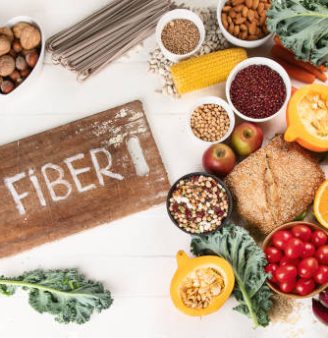
What is Fibroids?
Fibroids are tumors that grow inside the walls of a woman’s uterus. They are almost always non-cancerous, but can still pose significant health issues if they multiply or become too large. Fibroids affect women of all ages, but they mostly tend to be present in women who are over 40. But what about younger women? What are the chances and risk factors of young women developing fibroids in their lives?
Why do Fibroids Happen?
The reason why fibroids happen largely remains unknown. Research does show that fibroids develop from abnormal muscle cells within the uterus, and develop rapidly when exposed to the estrogen hormone. It could then be assumed that perhaps women who have abnormally high levels of estrogen may be at a greater risk of developing fibroids.
Young Women and Fibroids
A young woman who develops fibroids before the age of 20 tends to be quite rare, as they are more common among women who are of childbearing age. There are still risk factors in younger women developing fibroids later in life such as starting their menstrual cycle before the age of 10.
Women in their 20s are at a slightly increased risk of developing fibroids, as this tends to be the decade in which fibroids develop. A woman in her 20s may begin to experience pelvic pressure, changes to her period, a change in sex drive, or impacted fertility. Although women are at an increased risk of developing fibroids during this time, the likelihood of actually developing fibroids in your 20s is still less than 5%.

Who is Most Likely to Get Fibroids?
Most women who develop fibroids are 40+ years old. They may be perimenopausal and are likely to see a reduction in fibroids after menopause due to lower levels of estrogen.
Research also seems to suggest that African American women are at a greater risk of developing fibroids in their lifetime compared to women of other races. They are also more likely to experience larger, more painful fibroids than women of other races.
Most women who develop fibroids are 40+ years old. They may be perimenopausal and are likely to see a reduction in fibroids after menopause due to lower levels of estrogen.
Research also seems to suggest that African American women are at a greater risk of developing fibroids in their lifetime compared to women of other races. They are also more likely to experience larger, more painful fibroids than women of other races.
Women who have a family history of fibroids are at higher risk of developing fibroids. This means if your mother or sister developed fibroids in their life, you have a higher likelihood of developing them yourself.
Women who have a family history of fibroids are at higher risk of developing fibroids. This means if your mother or sister developed fibroids in their life, you have a higher likelihood of developing them yourself
Fibroid Symptoms and Complications
Most uterine fibroids don’t come with any symptoms or complications. Those women who do find themselves experiencing symptoms or complications are going to be influenced by the fibroid’s size, location, and amount of fibroids present in the uterus.
The most common symptoms/ complications of fibroids include:
- Lower abdominal/ back pain that doesn’t go away
- Irregular menstrual cycle
- Changes in urination habits
- Constipation
- Growing abdominal area
- Anemia
- Infertility
- Labor complications

Diagnosing Fibroids
Many women may receive a diagnosis of fibroids during a routine pelvic exam, but if you suspect that you may be dealing with fibroids, there are several measures you can take to confirm or deny suspicion.
-
Ultrasound
A standard scan of your uterus can reveal if there are fibroids present. Your doctor may order a saline sonogram, where a saline solution is placed into the uterus to get a better visual of potential fibroids.
-
MRI Scan
If the ultrasound indicates that fibroids are present, your doctor may request an MRI scan to get a better understanding of your fibroids. An MRI scan will paint a clearer picture of the number of fibroids, their exact location, and their size.
-
Blood Sample
Women who experience fibroids tend to also experience anemia. If your doctor suspects you have fibroids, they will take a blood sample to examine your red blood cell count.
Healing Fibroids
If you find yourself experiencing fibroids, there are several routes you can take in treatment for them
-
Medications
Many fibroids don’t require invasive surgery and can be treated with hormone replacement therapy to prevent further growth. Your doctor may recommend birth control if you are experiencing abnormal menstrual cycles as a result of the fibroids. Simple pain relievers such as ibuprofen or naproxen can also be taken for pain management of fibroids.
-
Surgery
If your fibroids are quite large and are causing significant discomfort, surgery may be the best route in treating them. You can either get an abdominal myomectomy, which removes deeper fibroids by cutting through the stomach area, or by getting a hysterectomy, which removes the uterus in its entirety.
-
Minimally Invasive Options
There are several procedures that are minimally invasive in removing fibroids. For example, your doctor may use radio frequencies to reduce the size of the fibroids present. Your doctor may also inject small particles known as embolic agents to supply blood to the uterus. These embolic agents help to reduce blood flow to the fibroids, causing them to shrink and eventually disappear.

-
Diet/ Lifestyle Changes
Incorporating a healthier diet/lifestyle can be instrumental in treating any ailment. Reducing stress, loading up on fruits and vegetables, reducing alcohol and drug intake, and keeping an eye on your blood pressure are all things recommended to do within your power while dealing with fibroids.
Conclusion
Research shows that although up to 80% of women will develop a uterine fibroid by the time they reach 50, fibroids remain the most common among women aged 40+, who have not experienced menopause. Women who experience fibroids before the age of 30 are less common, but risk factors include starting one’s menstrual cycle before the age of 10, coming from a family history of fibroids, never having a child, or coming from an African-American background.








